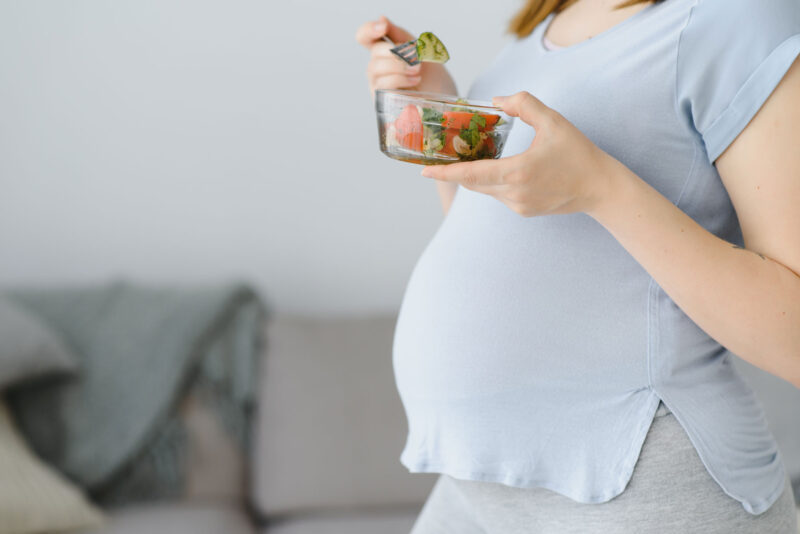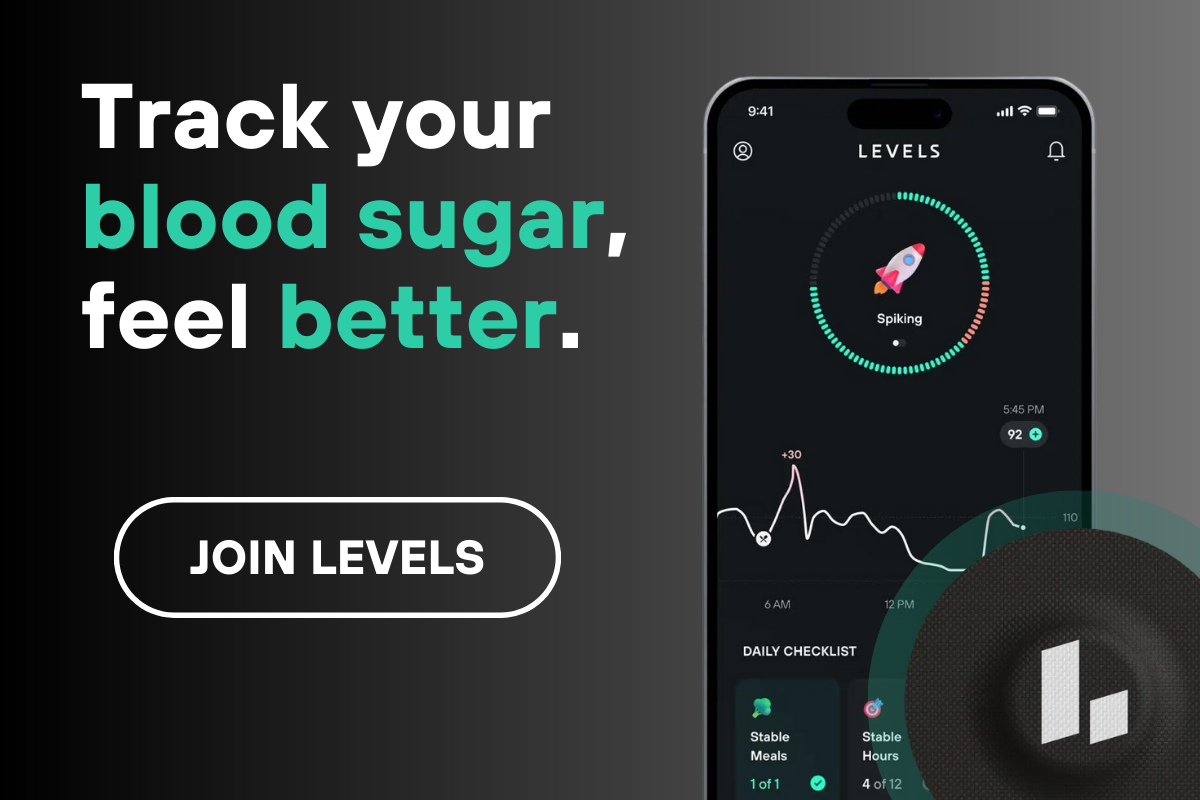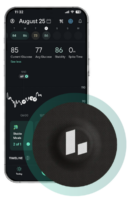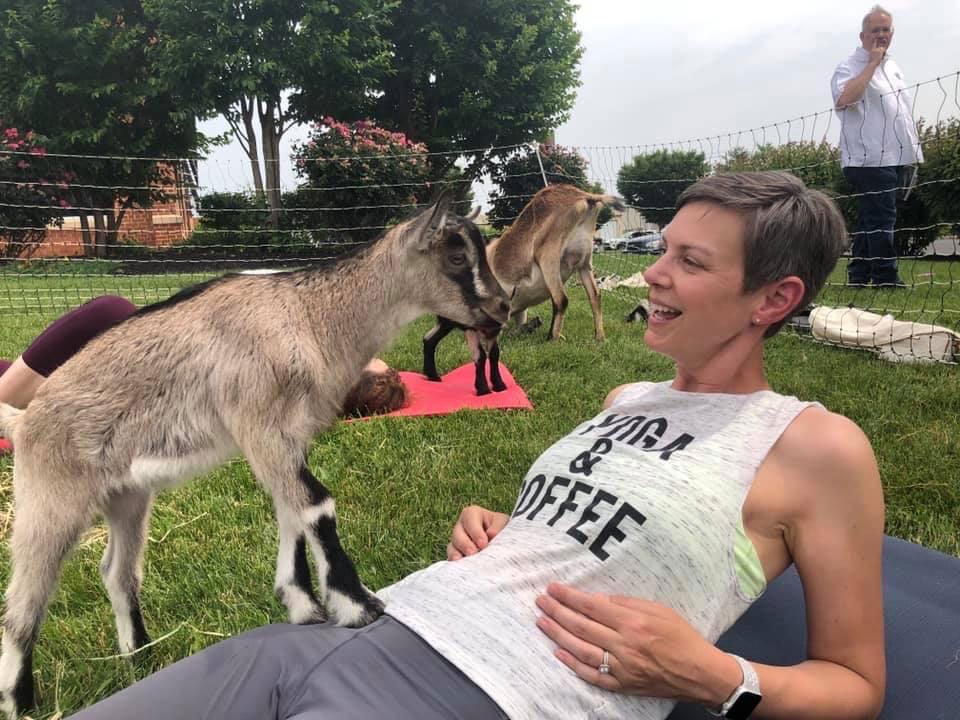Who: Alison Magee, 34
Where: Burlington, VT
Time with Levels: 2 years, intermittently
Most Useful Takeaway: Now that I’m pregnant, I see the value in having flexibility in my diet and incorporating more sources of healthy carbohydrates.
 1. What was your health background before joining Levels?
1. What was your health background before joining Levels?
Growing up, I was athletic. I played soccer and went on to become a Division I athlete. That’s not exactly my family background, though. My dad has diabetes and hypertension. That’s always been in the back of my mind. Though I’m not worried that I will go down that path, I have always thought that if he had access to this type of technology and body insight, he might have made different lifestyle decisions that would have taken him down a healthier road.
2. What made you want to put a CGM on your arm?
I’ve always had a fascination with health tech. When I was 12, I was the kid wearing a heart rate monitor to run. There’s always been this desire to visualize what’s happening in my body and optimize my performance and health.
When I learned about CGMs five years ago, I was determined to get one someday. The thing about health is that you can eat well and exercise, but you don’t actually know what’s going on inside your body. So when I heard about Levels while listening to a podcast, I knew I had to get a CGM.
3. What surprised you about your diet after wearing the CGM?
Two that spiked me that stand out are bananas and rice. I always felt like a healthy eater, but those two foods created a bigger rise than a candy bar. The thing is, I’ve never really liked bananas, so I just decided that I wouldn’t add them to my smoothies anymore. There’s no point in that. Rice, I’ve handled it a bit differently. I still eat it, but if I’m going to have a meal with rice, I make sure to include foods that provide good protein and fiber to help blunt my response.
4. What non-food factors affected your blood sugar?
It was interesting to see the impact on my blood sugar from stress. My blood sugar spikes were distinct on my graph. I’d have a stressful meeting or an in-person presentation without any food in my body; I’d have a huge blood sugar spike.
This has helped me connect the dots between stress and my well-being. Feeling super stressed is not a great state to be in. It’s made me more concerned about addressing stress because it’s not just a mental experience; I can also see the physiological experience of stress.
Finally, until I wore a CGM, I hadn’t realized the power of a short walk after a meal. The first time I saw this in action was when I attended my nephew’s birthday party. We had an ice cream cake. I expected a huge spike, but we took a 20-minute walk after dessert, and it wasn’t as bad as I thought it would be.
5. What more do you want to learn from using the CGM?
At first, when wearing the CGM, I gamified my experience with Levels. I quickly figured out how to keep the flattest line by hardly eating any carbohydrates and focusing on lots of protein and healthy fats. It’s true–I never had to have a spike if I left out carbs. The longer I’ve used it, the more flexible I’ve become within my eating, focusing on creating a stable blood sugar level but not being excessively strict.
In addition, my life has changed a bit over my trajectory with Levels: I’m pregnant now! It’s been another level of learning how food affects my body when I’m not pregnant versus when I am. Mostly, pregnancy has taught me not to be afraid of carbohydrates. After using the CGM, I realized that my body is resilient and can utilize a reasonable amount of carbohydrates, a critical nutrient while pregnant. For example, I eat some sourdough bread with soup at lunch or have more fruit, which works well for me without producing a big spike. Plus, fitting in carbs in this smart way prevents me from wanting to binge on chips.
I’m interested in using a CGM through various life stages. Not just pregnant and postpartum, but maybe even other transitions, like menopause. I love seeing how my body is impacted by those changes and what I can do to adjust. It’s also great to have this baseline data. I can look at this time when I was younger and most optimally healthy and figure out a way to get back there.
I’ve encouraged a lot of friends and family to try out Levels, and it’s been enlightening for every single person who’s worn a CGM. I’ve been the preacher of health for my family–nothing has moved the needle in the same way as seeing their data on a screen in real time.
 See how food affects your metabolic health
See how food affects your metabolic health
The best way to understand your glycemic response to what you eat is with a CGM and an app like Levels to help you understand your data. Levels members get access to the most advanced CGMs and personalized guidance to build healthy, sustainable habits. Click here to learn more about Levels.


 1. What was your health background before joining Levels?
1. What was your health background before joining Levels?







